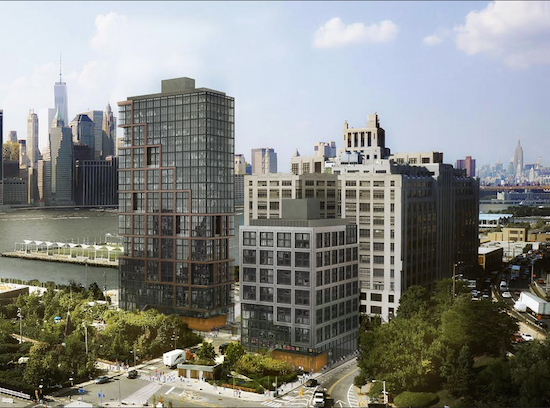Two key voices speak out to support Pier 6 housing
But Community Groups, Politicians & Activists Still Find Fault With de Blasio’s Plan

Two influential and key figures related to Brooklyn’s waterfront have spoken out publicly to support the city’s housing plan for Pier 6. Michael O’Keeffe, founder of the world-famous and beloved River Café, and Henrik Krogius, an Emmy-Award winning producer from NBC, now retired, and author of history books about Brooklyn’s waterfront, have written statements to the Brooklyn Daily Eagle to support Brooklyn Bridge Park Corporation’s plan for Pier 6 at the foot of Atlantic Avenue.
Currently, while the Empire State Development Corporation (ESD) ponders a decision on changes to the housing plan, with the inclusion of a number of units of affordable housing, a number of political and civic leaders have called for delays to ask for more impact studies before final approval. And on Monday, 17 community organizations joined Public Advocate Letitia James in submitting joint testimony to ESD in opposition to the proposed modification of the Brooklyn Bridge Park General Project Plan (GPP).
Writing In a letter to the editor in Brooklyn Daily Eagle below, Michael O’Keeffe refers to the small park he built as part of the ambience of the River Café, right under Brooklyn Bridge Tower in the mid-1970s. “I was here before anyone,” he writes, “ It was an empty, devastated area with it’s own raw beauty…”

Brooklyn Heights
View MoreRead the Brooklyn Height's Press and Cobble Hill News. Find out more about Brooklyn Height's History here.